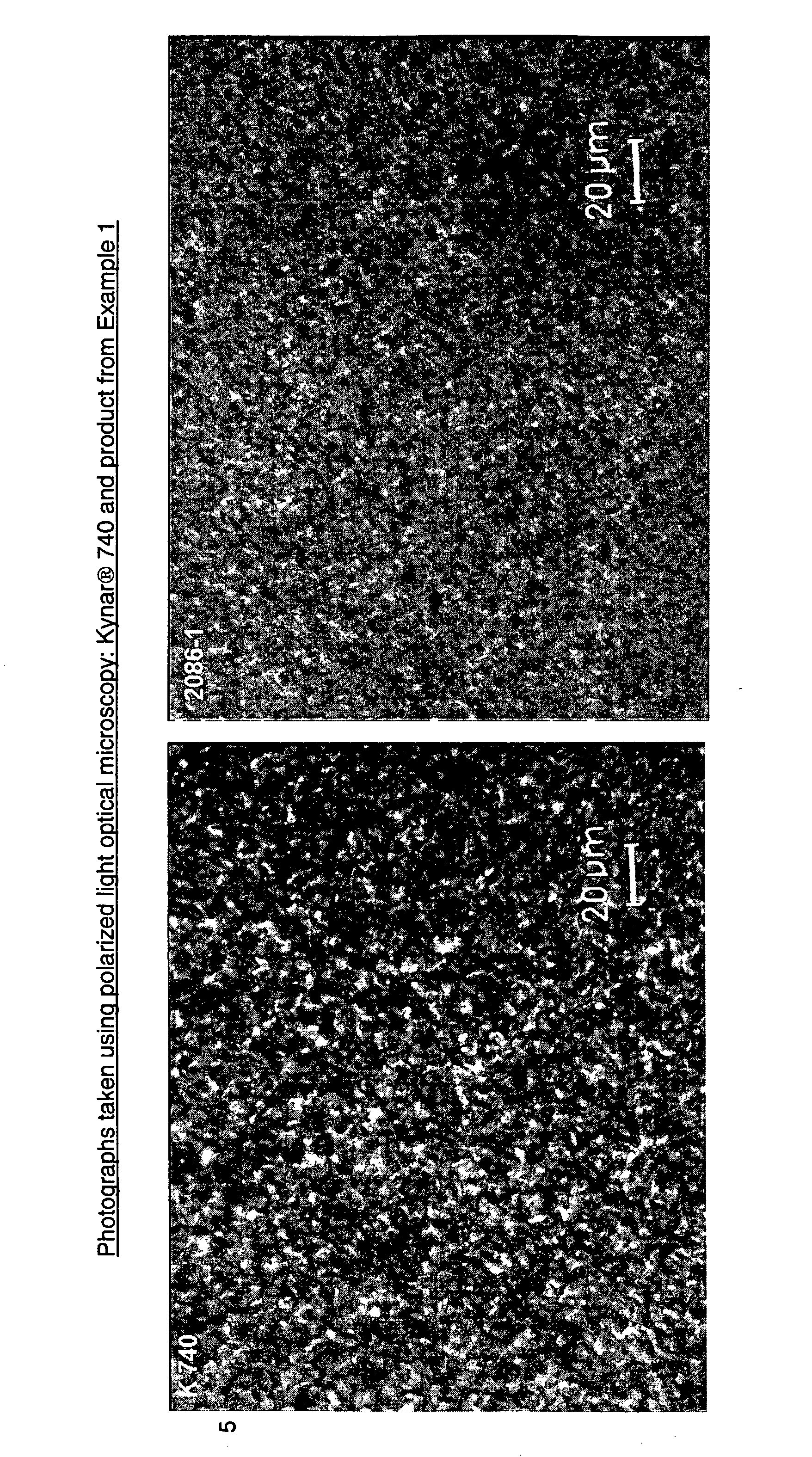Vinylidene fluoride polymer having a fraction of non-transferred chains and its manufacturing process
a technology of vinyl fluoride and non-transferred chains, which is applied in the field of vinyl fluoride polymers having a fraction of non-transferred chains and its manufacturing process, can solve the problems of affecting the strength of fluoropolymers and particularly pvdf, and the toughness of the material is usually very poor, and the impact strength is not always sufficien
- Summary
- Abstract
- Description
- Claims
- Application Information
AI Technical Summary
Benefits of technology
Problems solved by technology
Method used
Image
Examples
example 1
[0076] 18.6 l of deionized water and 50 g of a perfluorinated anionic surfactant of the C.sub.8F.sub.17CO.sub.2NH.sub.4 type were introduced into a 30-litre autoclave.
[0077] The autoclave was closed and mechanically stirred intermittently, then vacuum-degassed, filled with nitrogen at a pressure of up to 10 bar, vacuum-degassed again, filled with VF.sub.2 at a pressure of up to 5 bar and finally vacuum-degassed a last time. Next, the autoclave was heated to 85.degree. C., the mechanical stirring being at 150 rpm, and then filled with VF.sub.2 at an absolute pressure of up to 85 bar.
[0078] A 50 ml dose of a 0.5% by weight aqueous solution of potassium persulphate was added in a single step in order to start the reaction. The pressure was maintained at 85 bar by the continuous introduction of VF.sub.2.
[0079] When 2.25 g of VF.sub.2 had been consumed, 250 ml of ethyl acetate (EA) and 70 ml of the same aqueous potassium persulphate solution were added.
[0080] When 9 kg of VF.sub.2 had be...
example 2
[0083] The procedure was as in Example 1, except for the additional introduction of 200 ml of EA when 9 kg of VF.sub.2 had been consumed.
example 3
VF.sub.2 / HFP Copolymer
[0084] The procedure was as in Example 1, except for the introduction of 105 g of hexafluoropropylene (HFP) after the initial degassing and before the pressurization to 85 bar and the feed with a VF.sub.2 / HFP mixture containing 1% by weight of HFP up to 2.25 kg of mixture consumed. After introducing the EA when the VF.sub.2 / HFP mixture had been added, the reaction was continued with just VF.sub.2.
PUM
| Property | Measurement | Unit |
|---|---|---|
| size | aaaaa | aaaaa |
| size | aaaaa | aaaaa |
| shear moduli | aaaaa | aaaaa |
Abstract
Description
Claims
Application Information
 Login to View More
Login to View More - R&D
- Intellectual Property
- Life Sciences
- Materials
- Tech Scout
- Unparalleled Data Quality
- Higher Quality Content
- 60% Fewer Hallucinations
Browse by: Latest US Patents, China's latest patents, Technical Efficacy Thesaurus, Application Domain, Technology Topic, Popular Technical Reports.
© 2025 PatSnap. All rights reserved.Legal|Privacy policy|Modern Slavery Act Transparency Statement|Sitemap|About US| Contact US: help@patsnap.com

